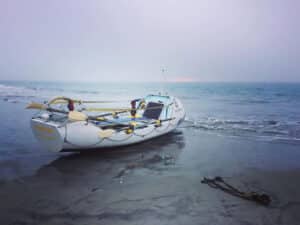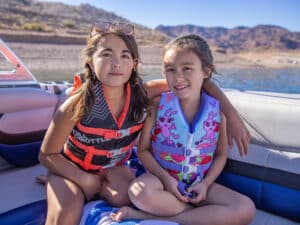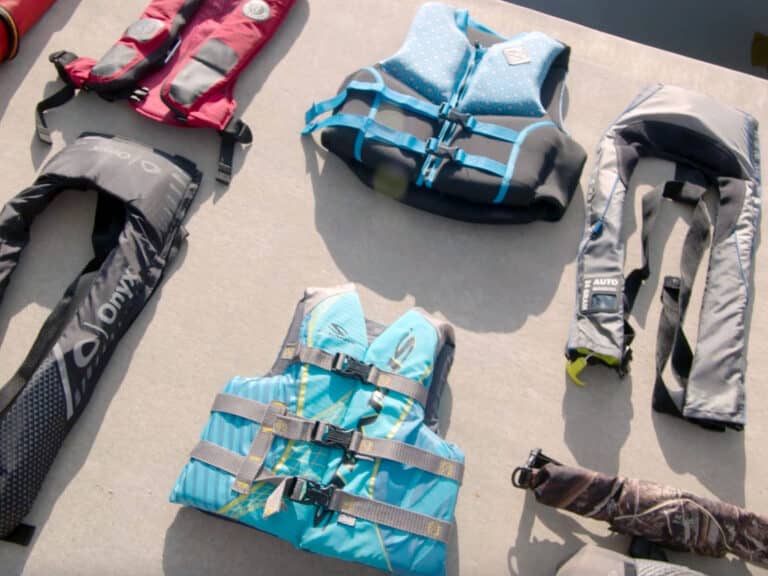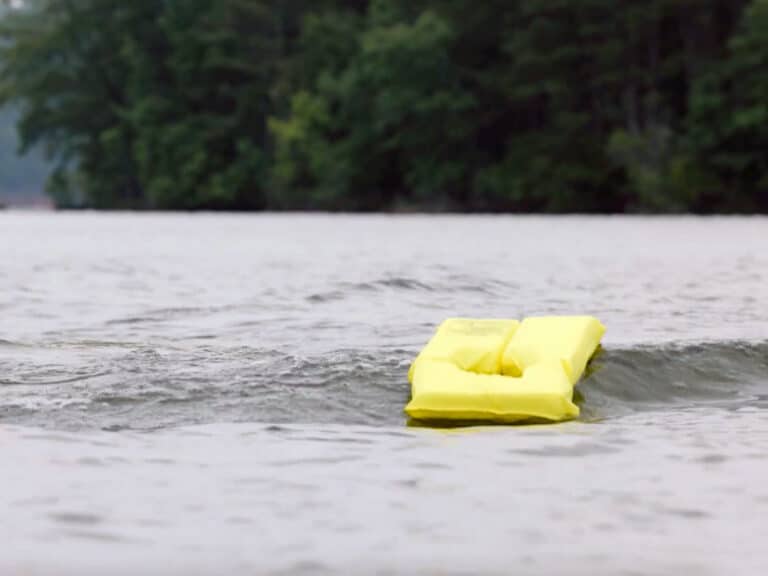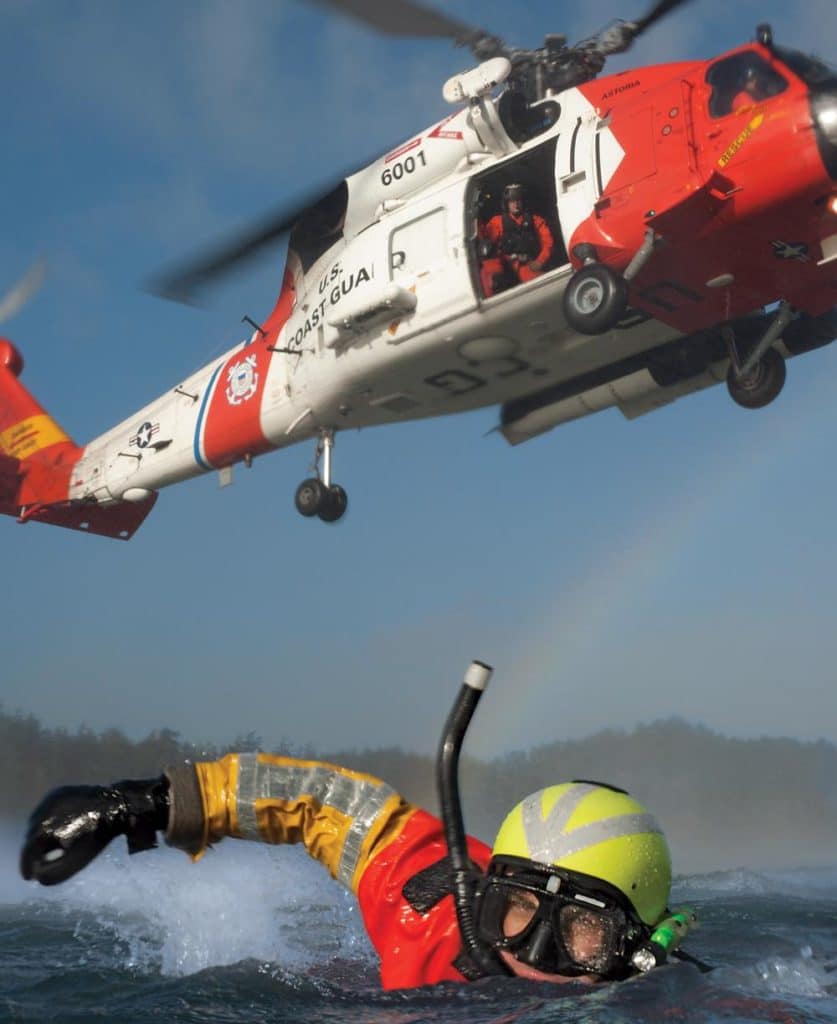
Nobody likes to think about calling for help on the water, but when the time comes, you better have the tools on board to make it happen. Here are some of the many ways to make sure your mayday is heard.
VHF — First Line of Defense
A VHF radio is your first choice to call for help, but it has limitations. Its range is dependent upon the gain and height of the antenna and the type of receiver. The Coast Guard maintains a 10- to 20-mile reach from shore in most areas. A fixed-mount radio and high-gain (9 db) antenna maximizes your range. When connected to a GPS and properly registered, your VHF’s DSC button sends a distress signal, your location and your description to the Coast Guard.
Bring aboard a handheld VHF as a spare, preferably a waterproof floating handheld like the Icom M24 ($179, icomamerica.com). Standard Horizon’s innovative HX851 portable ($269, standardhorizon.com) combines a VHF and a GPS.
If you venture beyond VHF range, invest in a long-range marine single-sideband radio or a satellite phone, like the Iridium 9555 ($1,295, iridium.com) or the Inmarsat IsatPhone Pro ($599, inmarsat.com).
Cell Phones at the Ready
Cell phones have limited and unpredictable range at sea and can’t broadcast a mayday call. Your first thought is to call 911? Don’t. That’s for land-based emergencies. Instead, preprogram the phone numbers of the Coast Guard, harbor patrol and local services such as Vessel Assist or Sea Tow. Extend the range with a marine cellular antenna and wireless amplifier/repeater like those offered by Digital Antenna (digitalantenna.com). Still, don’t rely on it as a first response.
EPIRBs — Worldwide Marine 911
As long as an EPIRB’s antenna has an unblocked 360-degree view of the sky, its mayday signal can send your boat’s information and location via satellite from almost anywhere. Personal locator beacons (PLBs) do the same, but are intended for an individual rather than the boat. PLBs typically transmit for 24 hours — an EPIRB lasts twice as long. Both are available with an internal GPS, which helps pinpoint your location and quicken response time.
AIS
Automatic Identification System (AIS) lets you “see” other AIS-equipped vessels on a chart-plotter screen. It displays vessel name, precise location, speed, heading, proximity to your boat and more. More importantly, with Class B AIS you can broadcast your exact location to all nearby AIS-equipped vessels. So in an emergency situation, they can more easily find you.
SART
A search-and-rescue radar transponder (SART), like the SA50 SART from Simrad ($800, simrad-yachting.com), when activated, will transmit a straight row of 12 blips to all radars in the vicinity. On the screen, those blips point like an arrow on the screen to your precise location.
Short-Range “Mayday” Tools
For close range, try a “marine hailer,” like a Standard Horizon 240SW ($40) or even a megaphone. Man-overboard (MOB) alarm devices, like Raymarine’s LifeTag ($600, raymarine.com), consist of personal transmitters and a shipboard receiver that sounds an alert when a crew member, or even a family pet, falls overboard. If all else fails, try a plastic whistle. ACR Electronics’ WW-3 Res-Q rescue whistle costs $7 on amazon.com.
Six for Safety
ICOM IC-M412 VHF
Red DSC button signals distress
$200, icomamerica.com
Simrad EP50 Auto EPIRB
Sends distress signal by satellite
$1,136, simrad-yachting.com
Cell Phone Amplifier
Extends, enhances cell range
$180, digitalantenna.com
ACR Nauticast B AIS
Broadcasts info to other vessels
$850, acrelectronics.com
Simrad SA50 SART
Sends rescue signals to radar
$979, simrad-yachting.com
Raymarine LifeTag
A man-overboard alert system
$600, raymarine.com
The U.S. Coast Guard is asking all boat owners and operators to help reduce fatalities, injuries, property damage, and associated healthcare costs related to recreational boating accidents by taking personal responsibility for their own safety and the safety of their passengers. Essential steps include: wearing a life jacket at all times and requiring passengers to do the same; never boating under the influence (BUI); successfully completing a boating safety course; and getting a Vessel Safety Check (VSC) annually from local U.S. Coast Guard Auxiliary, United States Power Squadrons(r), or your state boating agency’s Vessel Examiners. The U.S. Coast Guard reminds all boaters to “Boat Responsibly!” For more tips on boating safety, visit www.uscgboating.org.



